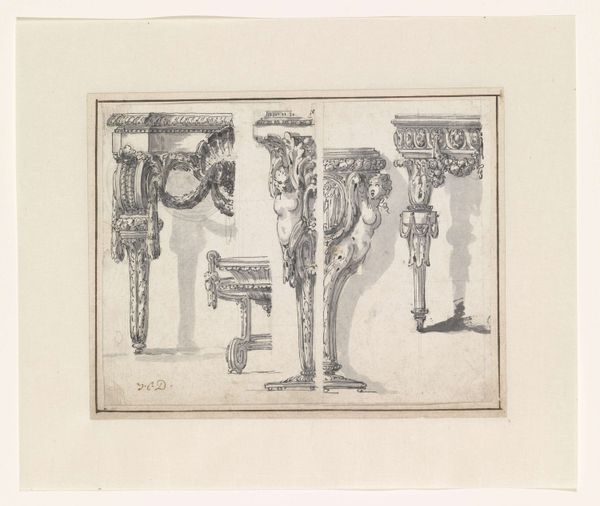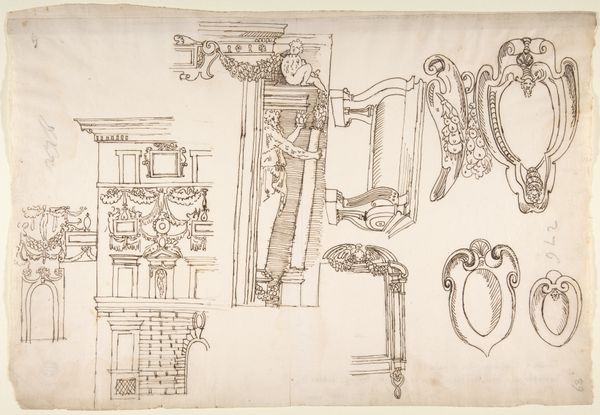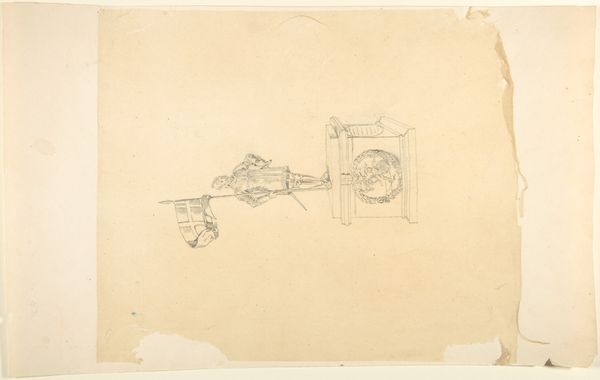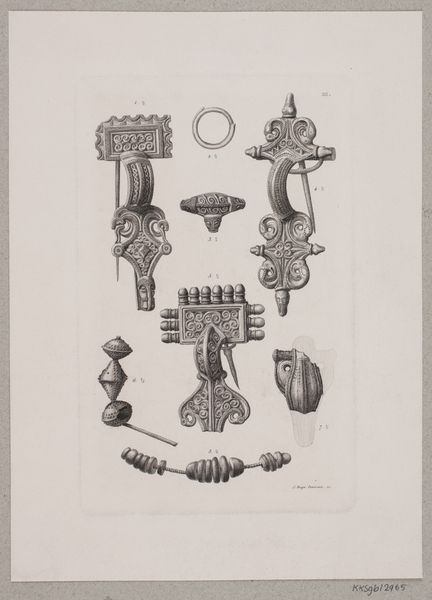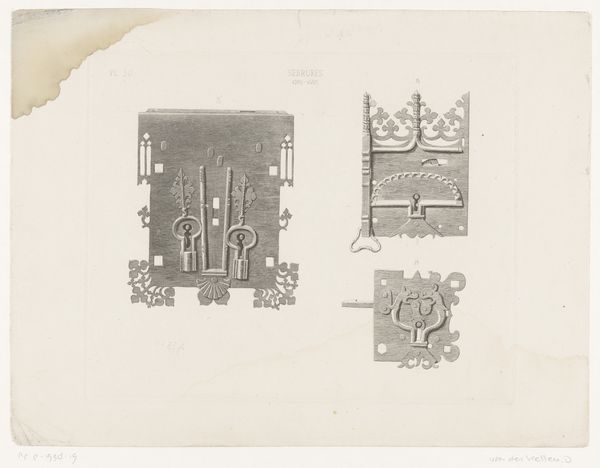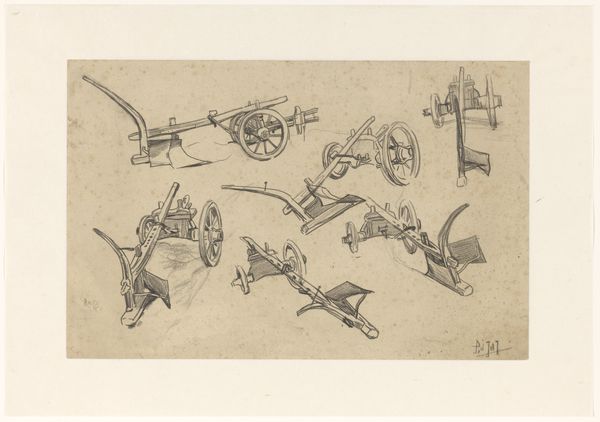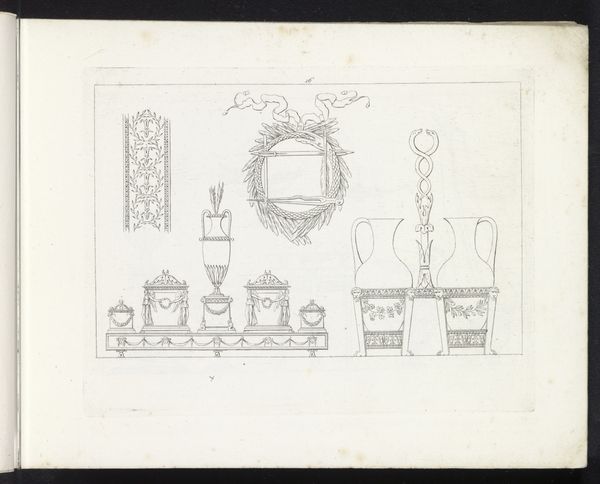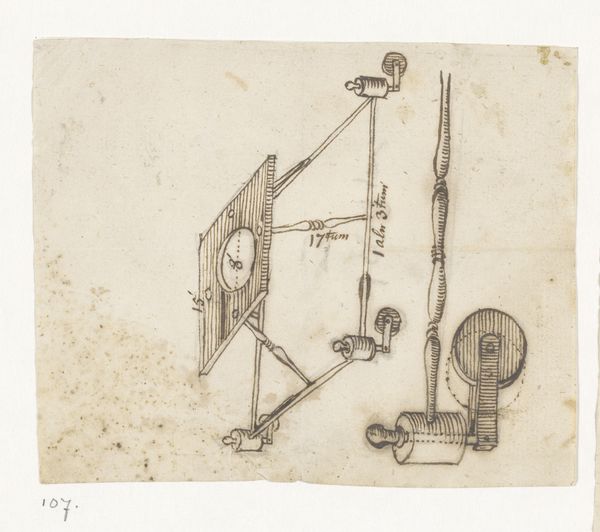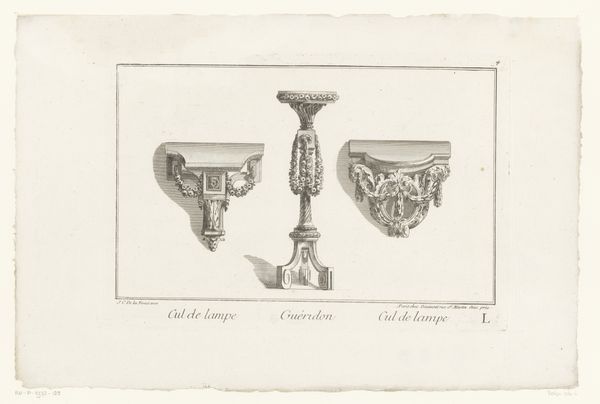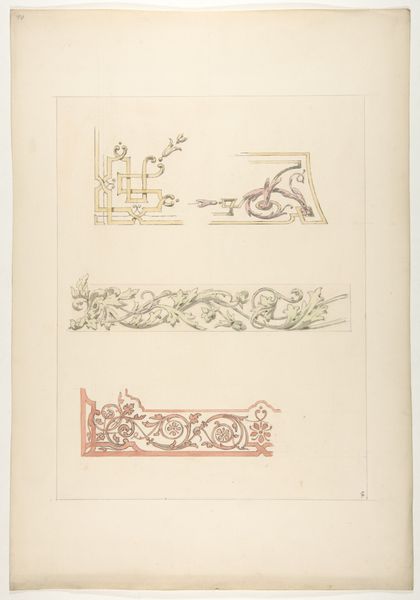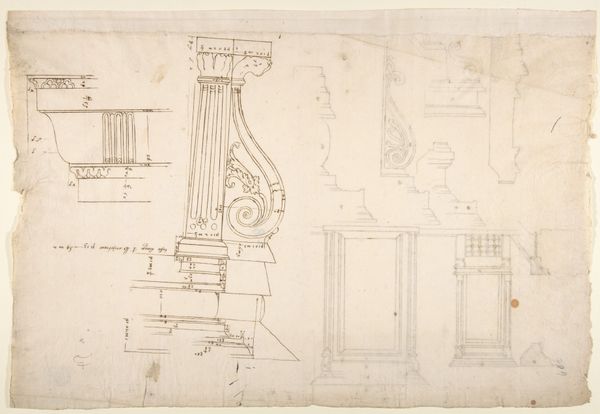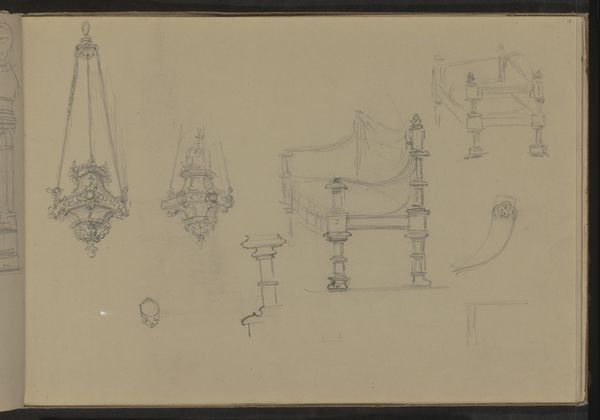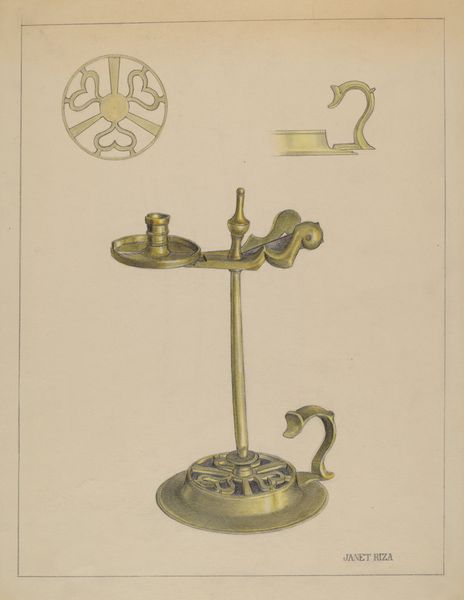
Two designs for tables, stands, a vase and a bowl on a stand c. 1765 - 1780
0:00
0:00
drawing, ink, engraving
#
drawing
#
table
#
neoclacissism
#
form
#
ink
#
geometric
#
line
#
decorative-art
#
engraving
Dimensions: height 182 mm, width 235 mm, height 198 mm, width 253 mm
Copyright: Rijks Museum: Open Domain
Editor: Here we have Jean Charles Delafosse's "Two designs for tables, stands, a vase and a bowl on a stand," made with ink and engraving around 1765-1780. I’m struck by how these meticulously rendered drawings elevate functional objects into elaborate, almost theatrical designs. What's your perspective on this piece? Curator: I see a direct engagement with the means of production. Delafosse isn’t just sketching ideas; he's mapping out the labor and material processes needed to bring these ornate designs to life. Think of the stone carving, the woodworking, the metalwork… He’s showing us the potential for Neoclassical aesthetics to permeate everyday life, blurring the line between 'high art' and functional craft. Look at how each line implies a specific tooling technique. Where do you see that tension between art and craft manifested? Editor: It's in the excessive ornamentation, I think. Those swirling garlands and figures feel more sculptural than structural. They challenge the table’s pure functionality, almost weighing it down visually. Is it meant to highlight wealth through the display of such detailed, and probably expensive, craftsmanship? Curator: Exactly! The consumption aspect is key. These designs imply a social context of luxury and conspicuous display. Someone isn’t just buying a table; they're buying into a visual language of status and refined taste, achievable only through the specialized labor of artisans. Each flourish and embellishment signifies an investment of both capital and skill, highlighting the socioeconomic realities embedded within decorative arts. How does analyzing the materials and methods impact our understanding of Neoclassicism beyond idealized forms? Editor: I never considered the sheer labor behind these supposedly simple designs. Now I’m more aware of the economic forces at play and the exploitation of craftspeople during this period. Thanks! Curator: Indeed, understanding the material conditions gives us a much more nuanced understanding of the era.
Comments
rijksmuseum about 2 years ago
⋮
Delafosse was an indefatigable draughtsman, who produced an enormous number of designs for neoclassical works of art. These two drawings demonstrate the fecundity of his imagination. From 1768 many of Delafosse’s designs were published as engravings. Two collected editions came out in Amsterdam in 1785 and 1787. Apparently his style was long popular there.
Join the conversation
Join millions of artists and users on Artera today and experience the ultimate creative platform.
